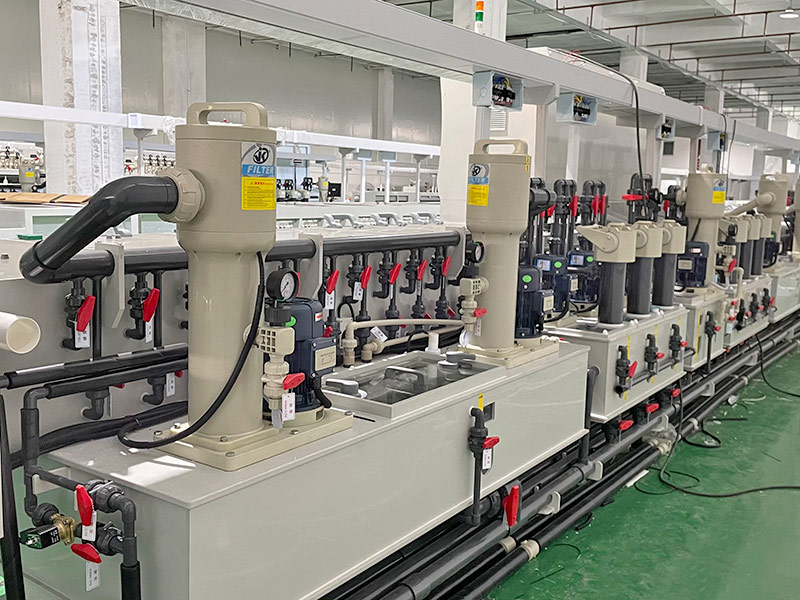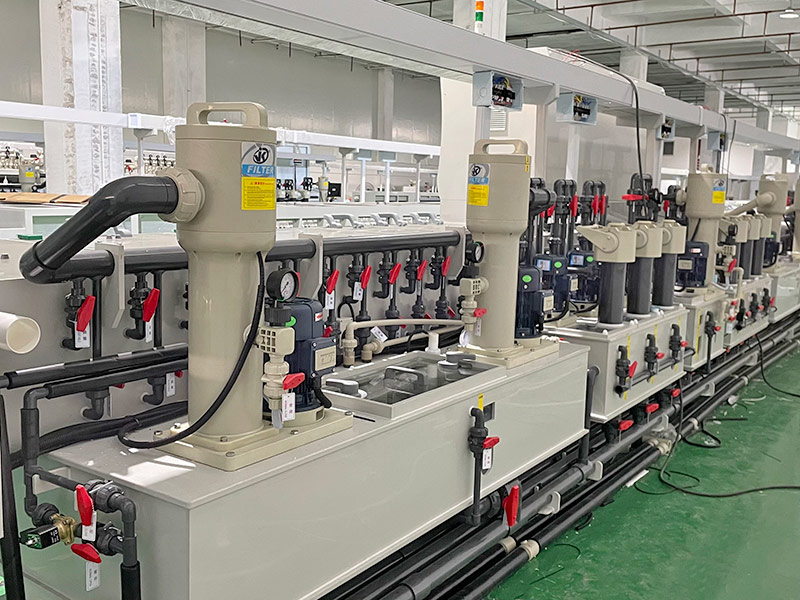Qualified raw materials are very important for electronics manufacturers, so the inspection of copper foil, which is one of the main substrates of black hole production line manufacturers, is even more important. . The quality test and acceptance methods are as follows, which are worthy of your collection and reference.
The sample material is 250mm wide and cut into 250mm×480mm. The cut material is subjected to SPS→lamination→exposure→etching-DES to form the required circuit for testing (double-sided etching is single-sided) ).
1.1 Anti-peeling test: Cut the etched circuit sample to an appropriate length (with glue copper 3.2mm×20cm; unglue copper 1mm×20cm) and pull the copper foil 1~3cm apart, The PI surface is attached to the 90-degree flat fixture, the upper fixture clamps the copper foil and pulls the copper foil surface upward 90 degrees, the drawing speed is 50mm/min, and the average and most stable tension point is recorded. Bake at 150°C for 6 hours and ring Measure (temperature 60°C/humidity 90RH/72H) again to measure the tensile strength of the copper foil to calculate the peel strength.
1.2 Thermal stress test: Cut the etched circuit sample into 3 pieces of 2.5cm×2.5cm size, remove the moisture by baking (150℃; 2hr), and immerse it in a 288℃ tin bath (lead-free ) Take it out after 10 seconds, and check visually for blistering and peeling.
1.3 Flexural resistance test: Cut the etched circuit sample into 1mm (6 strips)×10cm for R0.8/Load500g (swing at 135 degrees for each side) tortuosity resistance test, read the MIT value and record it .
1.4 Chemical resistance test: Cut the etched circuit samples into 2.5cm×2.5cm three pieces, and place them in a solvent at room temperature (10﹪2N HCL /10﹪2N NaOH/10﹪MEK/10﹪IPA) After 5 minutes, observe whether there is a phenomenon of the potion attacking the line.
1.5 Buckling resistance test: Cut the etched circuit sample into 1mm (6 pieces)×10cm for R2/stroke 120 mm buckling test, read the MIT value and record it.
1.6 Insulation resistance test: Cut the etched circuit sample into a standard circuit, and bake it (50℃/24hr), set the voltage to DC 500V, connect two test points with a test pen, and test time 60s, read the value and record it.
1.7 Secondary precipitation: Cut the etched circuit sample into 1mm (18 lines)×10cm for pressing (temperature: 175℃; preheating time: 10S; molding time: 180S; pressure: 100kg/cm2) , After pressing, go through the pre-treatment to conduct a nickel plating test. After nickel plating, use a 30x magnifying glass to observe whether there is copper exposed.
1.8 Adhesive-free copper does not require a second precipitation test. Three sets of samples are taken for each test of the above test items.
2. Dimensional stability test: take the sample material 250mm wide, cut into 250mm×280mm size and drill a hole with a diameter of 2.0mm in the four corners of the plate, and etch the copper completely after measuring the original size Remove, rinse with clean water, put it in an oven at 150°C, bake for 30 minutes, and let it stand at room temperature for 24 hours before measuring its dimensional change, recording the data, and calculating the dimensional stability.
2.2 Dimensional stability judgment standard: copper without glue ±0.1%; copper with glue ±0.15%, and the R value is qualified within ±0.05%.
3.0 Color card production: copper foil materials require suppliers to provide pure PI; a pure copper foil original color card, and sample materials will be sent (with plastic copper: copper + plastic + PI; non-glue copper: copper + PI) Make a color card for the front and back. The double-sided board of the sample material is etched as a single-sided board. One side retains the circuit and the other side is the PI side. A total of 8 color cards of copper foil materials were produced.
4. Yield rate test: After the reliability test is completed, it is determined whether it meets the requirements of the factory. If it is OK, the yield test is performed, and the yield test is not required for NG.
4.1 The R&D department applies for the production of test material numbers, the business department places an order for the test material numbers after receiving the R&D trial production notice, and the design department assists in the production of test material numbers.
4.2 According to the requirements of the R&D department, after the design of the new raw material sample is completed, the R&D department is notified to monitor at the key station (①after drilling ②after exposure and lamination ③after DES etching ④CVL after sandblasting ⑤after CVL pressing ⑥processing After pressing ⑦after screen printing and ⑧after electroplating nickel gold), the size expansion and shrinkage measurement will be carried out, and the quality tracking during the test will be carried out.
4.3 After the test is completed, analyze the defective items according to the inspection, integrate the test results, and report to the relevant departments (environmental safety department, quality assurance department, manufacturing department, manufacturing department, design department, purchasing department).
The above is a brief description of the copper foil test and acceptance method of FPC black hole circuit board factory. If you have other related questions about sandblasting line, FPC black hole line, horizontal sinking copper wire, you can contact us online in time Consultation contact.




















